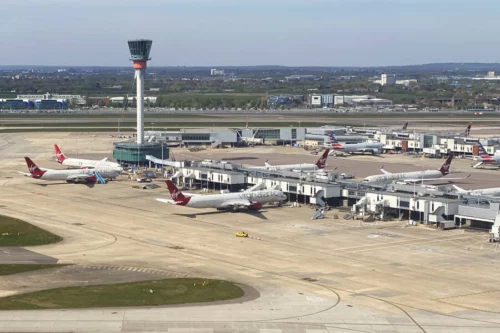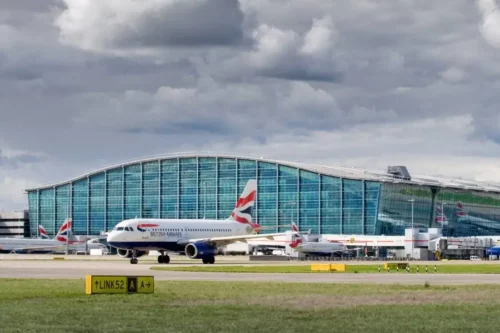Which 25 routes from Heathrow airport had over 1 million passengers in 2024?
Links on Head for Points may support the site by paying a commission. See here for all partner links.
If you are in any doubt that air travel is back to normal, take a look at the record breaking year many UK airports enjoyed in 2024.
Top of the list is Heathrow, which broke its previous record with 83.9 million passengers, an increase of 3.7% over 2019.
Heathrow has continued to break its own records with 6.3 million passengers in January and 5.7 million in February. (Obviously March 2025 will now be a little weak!) It predicts 84.2 million passengers for 2025, although that seems like a low ball.

What are Heathrow’s busiest routes?
Last year, we published a list of routes from Heathrow with one million passengers or more. I thought it would be interesting to take another look at this with the updated 2024 figures.
As I understand it, Heathrow has more ‘millionaire’ routes than any other airport; next-best is Dubai (DXB) with has, I’m told, 22 such routes.
These are based on where the initial flight lands and do not account for connecting itineraries, which is why Dubai and Doha rank so highly. Anyone flying from Heathrow to Singapore on Emirates is counted as travelling to Dubai.
Descending from highest passenger volume (remember that all serve 1m+ Heathrow passengers per year):
- New York JFK – 3.2m
- Dubai (DXB) – 2.5m
- Doha (DOH) – 2m
- Dublin (DUB) – 1.9m
- Los Angeles (LAX) – 1.7m
- Madrid (MAD) – 1.5m
- Amsterdam (AMS) – 1.5m
- Delhi (DEL) – 1.4m
- Frankfurt (FRA) – 1.4m
- Istanbul (IST) – 1.3m

- Munich (MUC) – 1.3m
- Toronto (YYZ) – 1.2m
- Hong Kong (HKG) – 1.2m
- Singapore (SIN) – 1.2m
- Abu Dhabi (AUH) – 1.2m
- Zurich (ZRH) – 1.2m
- Mumbai (BOM) – 1.2m
- Edinburgh (EDI) – 1.1m
- Chicago (ORD) – 1.1m
- Paris (CDG) – 1.1m
- Lisbon (LIS) – 1.1m
- Miami (MIA) 1.1m
- San Francisco (SFO) – 1.1m
- Boston (BOS) – 1.1m
- Geneva (GVA) – 1m
Together, the top 25 routes contribute 35.6 million passengers to Heathrow’s annual total – 42% of its total. The remaining 214 airports served from Heathrow make up the rest.
New York is the predictable winner. Newark, which made the list in 2023, is the only route not to have made it this year.
The London to New York corridor is one of the most lucrative in the world. In 2018, Heathrow to New York JFK became the first billion-dollar route in the world for a single airline – British Airways. Add in other airlines and airports (Gatwick, Newark) and you can see how important the special relationship is to the UK.
Abu Dhabi and Miami are both new additions to this list. Heathrow now has five direct flights to Miami per day, including one on BA’s A380. Both Virgin Atlantic and American Airlines operate two each. Abu Dhabi, meanwhile, sees up to five daily flights (four from Etihad, one from BA) with at least two regularly on A380s.
You can clearly see the ‘Eurostar effect’ when you compare Amsterdam and Paris, with Amsterdam a full 13 spots ahead.


 Rob
Rob 





Comments (79)